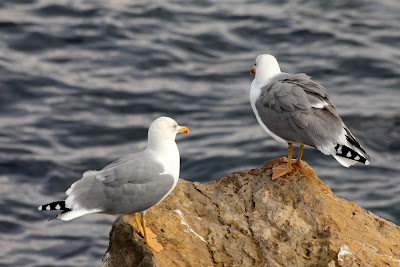A. Prezentacja efektywnego stabilnego zarządzania:
• A.1. Firma wdrożyła długoterminowy system stabilnego zarządzania, który jest adekwatny do rzeczywistości i skali oraz bierze pod uwagę środowiskowe, kulturowe, jakościowe i zdrowotne czynniki.
• A.2. Firma spełnia wszystkie wymogi narodowego oraz lokalnego prawa oraz regulacji ( wliczając w to oprócz innych czynników, także czynniki zdrowia, bezpieczeństwa oraz środowiska)
• A.3. Wszyscy pracownicy uczestniczą w okresowym szkoleniu, biorące pod uwagę ich rolę w zarządzaniu środowiskiem, kulturową, zdrowiem oraz bezpieczeństwem.
• A.4. Satysfakcja klienta jest mierzona w odpowiedni sposób i koryguje podjęte akcje, tam , gdzie zachodzi taka potrzeba.
• A.5. Materiały promocyjne są kompletne i dokładne. Nie obiecują więcej niż jest w stanie zapewnić.
• A.6. Projekt i konstrukcja budynków i infrastruktury:
A.6. 1. Przestrzega lokalny podział stref oraz wymogi chronionych terenów.
A.6.2. Respektuje naturalne oraz kulturowe dziedzictwo okolicy pod względem lokalizacji, projektu, wpływu oceny, prawa ziemi, nabycia.
A.6.3. Używa lokalnych adekwatnych reguł zrównoważonej konstrukcji.
A.6.4. Zapewnia dostęp dla osób o szczególnych potrzebach.
• A.7. Informacje na temat interpretacji naturalnego otoczenia, lokalnego, kulturowego dziedzictwa, konsumenci mają zapewnione, tak samo jak wyjaśnienie adekwatnego zachowania podczas zwiedzania naturalnych obszarów oraz obszarów kulturowego dziedzictwa.
B. Maksymalizacja społecznych i ekonomicznych korzyści dla lokalnych jednostek społecznych przy jednoczesnym najmniejszym wywieraniu wpływów negatywnych
• B.1. Przedsiębiorstwo wspiera aktywnie inicjowanie rozwoju infrastruktury społecznej i zaplecza dla zamieszkałej wspólnoty w obrębie edukacji, ochrony zdrowia i higieny.
• B.2. Społeczność lokalna jest zatrudniona, jak również na stanowiskach kierujących. Szkolenia są organizowane po potrzebie.
• B.3. Przedsiębiorstwo wykupuje lokalne usługi i towary, które są dostępne do nabycia na targach.
• B.4. Przedsiębiorstwo oferują mniejszym lokalnym przedsiębiorstwom środki do rozwoju i sprzedaży produktów zrównoważonych, które są oparte na naturalnym środowisku oraz historii i kulturze danego kraju (wliczając jedzenie i picie, wyroby rzemieślnicze, dzieła sztuki, produkty rolne)
• B.5. Poprowadzono kodeks prawny dotyczący działań prowadzących w miejscowych i lokalnych społecznościach, przy współpracy i za zgodą z wspólnoty.
• B.6. Przedsiębiorstwo wprowadziło w życie sposób postępowania przeciwko komercyjnemu wyzyskowi, w szczególności dzieci i młodzieży, w tym wykorzystywaniu seksualnym.
• B.7. Przedsiębiorstwo zatrudnia kobiety i mniejszości lokalne na zasadzie równouprawnienia, w tym na pozycjach kierujących, przy jednoczesnym sprzeciwie zatrudnianiu dzieci i osób niepełnoletnich.
• B.8. Respektuje się i postępuje zgodnie z międzynarodowym i krajowym prawem dotyczącym ochrony praw osób zatrudnionych, a zatrudnieniu zostają wynagrodzeni płacą minimalną, zapewniającą środki na utrzymanie.
• B.9. Działania prowadzone przez przedsiębiorstwo nie zagrażają zaopatrywaniu sąsiednich wspólnot w podstawowe potrzeby, jak dostęp do wody, energii elektryczna, urządzeń sanitarnych.
C. Osiągnięcie maksymalnych korzyści dla dziedzictwa kulturalnego przy jednoczesnej minimalizacji wpływów negatywnych:
• C.1. Przedsiębiorstwo kieruje się ustalonymi wytycznymi oraz prawnym kodeksem postępowania dotyczącego odwiedzania miejsc o znaczeniu historycznym lub kulturalnym, w celu zmniejszenia negatywnego wpływu związanego z wizytą, nie umniejszając przyjemności odwiedzającego w związku z jego wizytą.
• C.2. Historyczne i archeologiczne artefakty nie podlegają sprzedaży, wymianie, prezentacji, chyba, że jest to dozwolone przez prawo.
• C.3. Przedsiębiorstwo przyczynia się do ochrony mienia i miejsc ważnych pod względem historycznym, kulturowym, archeologicznym i duchowym oraz nie utrudnia lokalnej społeczności dostępu do niego
• C.4. Przedsiębiorstwo wykorzystuje elementy sztuki miejscowej, architektury oraz dziedzictwa kulturowego podczas projektowania, dekorowania, w sklepach, przy jednoczesnym respektowaniu intelektualnego mienia wspólnoty lokalnej.
D. Osiągniecie maksymalnych korzyści dla środowiska przy jednoczesnej minimalizacji wpływów negatywnych
• D.1. Ochrona zasobów
D.1.1. Polityka nabywcza faworyzuje produkty i dobra przyjazne dla środowiska, takie jak materiały budowlane, środki produkcji, jedzenie i produkty zaopatrzenia oraz dobra masowej konsumpcji
D.1.2. Nabywanie produktów jednorazowego użytku i dóbr konsumpcyjnych jest mierzalne, a przedsiębiorstwo poszukuje aktywnie sposobów ograniczenia ich używania.
D.1.3. Wielkość zużywania energii elektrycznej powinna być mierzalna, źródła ich pochodzenia wskazane oraz należy podjąć działania w celu ograniczenia całkowitego zużycia energii, zachęcając jednocześnie do korzystania z odnawialnych źródeł energii.
D.1.4. Zużycie wody powinno być mierzone, wskazane źródła jej pochodzenia oraz powinny zostać przyjęte środki i podjęte działania w celu obniżenia całkowitego jej zużycia.
• D.2. Ograniczanie zanieczyszczeń
D.2.1. Kontrola emisji gazów cieplarnianych ze wszystkich źródeł jest mierzona poprzez zakres. Procedury są realizowane w celu zmniejszenia i wynagrodzenia, jako sposób na osiągnięcie neutralności klimatycznej.
D.2.2. Ścieki, wliczając szarą wodę, należy uzdatniać i używać ponownie w miarę możliwości.
D.2.3. Solidny plan gospodarki odpadami jest realizowany poprzez wyznaczenie sobie ograniczeń ilościowych odpadów, które nie nadają się do ponownego wykorzystania lub recyklingu.
D.2.4. Stosowanie szkodliwych substancji takich jak pestycydy, farby, środki dezynfekujące do basenu i środki czyszczące, jest ograniczone do minimum i zastąpione przez nieszkodliwe produkty, jeśli są akurat dostępne. Używanie substancji chemicznych jest odpowiednio zagospodarowane i przemyślane.
D.2.5. Działalność wykonuje czynności mające na celu zmniejszenie zanieczyszczeń pochodzących z hałasu, światła, odpływów, erozji, związków chemicznych niszczących warstwę ozonową, glebę oraz powietrze.
• D.3. Ochrona różnorodności biologicznej, ekosystemów i krajobrazów
D.3.1. Gatunki dzikiej przyrody są zabierane ze środowiska naturalnego, używane, wystawiane lub sprzedawane na rynki międzynarodowe, w ramach działalności, która zapewnia, że ich wykorzystanie jest zrównoważone.
D.3.2. Dziko żyjące gatunki zwierząt nie mogą być przechwycone, chyba że są posiadane tylko przez osoby upoważnione i odpowiednio wyposażone do trzymania ich w domu i opieki nad nimi, za wyjątkiem uregulowanych działań dotyczących życia chronionych okazów dzikich zwierząt.
D.3.3. Działalność wykorzystuje rodzime gatunki dla dobra krajobrazu i renowacji, podejmuje również działania, które mają na celu chronienie przed pojawieniem się obcych, inwazyjnych gatunków
D.3.4. Działalność przyczynia się do wspierania ochrony różnorodności biologicznej, w tym wspieranie naturalnych obszarów chronionych oraz obszarów o wysokiej różnorodności biologicznej.
D.3.5. Interakcje z dziką przyrodą nie mogą wpływać negatywnie na żywotność populacji pozostającej na wolności. Zakłócenia naturalnych ekosystemów są zminimalizowane i odnowione, jak również istnieje wyrównawczy wkład zarządzania ochroną.

















